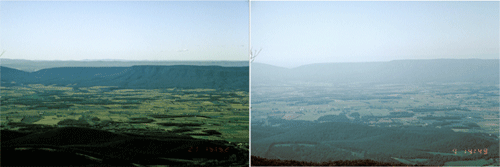EPA is Ready to Launch New Water Finance Program
By Joel Beauvais
There’s a lot of discussion right now about the need to reinvest in America’s infrastructure, and there’s no question that our aging water infrastructure needs to be at the top of the list. EPA’s surveys of communities across the country show that the U.S. needs about $660 billion in investments for drinking water, wastewater, and stormwater infrastructure over the next 20 years. This infrastructure is critical to the protection of public health and the environment, and to the functioning of every aspect of our national economy. As a country, we need to invest more in modernizing this infrastructure, we need to make our dollars work smarter and harder, and we need to do it in a way that supports all communities across the country.
Many people don’t know that EPA plays a central role in supporting water infrastructure development in large and small communities nationwide. We administer the Clean Water and Safe Drinking Water State Revolving Fund programs which, life-to-date, have supported over$151 billion in low-interest loans and other critical support for water infrastructure. FY 2016 alone accounted for $9.5 billion of such support. We also provide millions of dollars each year in training, technical assistance and direct support for small communities and communities in need. In 2015, we set up a Water Infrastructure Resiliency and Finance Center, that serves as a “think-and-do” tank to spur innovation in water infrastructure finance and support communities in need.
Now, we’re getting ready to implement an innovative new program that could provide billions of additional dollars to support water infrastructure investment across the country. The Water Infrastructure Finance and Innovation Act (WIFIA) of 2014 created a new federal loan and guarantee program at EPA to accelerate investment in our nation’s water infrastructure. It was designed after the proven and highly successful TIFIA infrastructure loan program at the US Department of Transportation. WIFIA authorizes EPA to provide long-term, low-cost rate loans, at U.S. Treasury rates, for up to 49 percent of eligible project costs for projects that will cost at least $20 million for large communities and $5 million for small communities (population of 25,000 or less). WIFIA is structured to work hand-in-hand with the State Revolving Funds – giving states and prospective borrowers the opportunity to decide which program is best to support a given project, or whether both together should do so. The President’s FY17 Budget Proposal called for a $20 million investment in this program, which – because of the innovative way in which it’s structured – would be expected to support nearly $1 billion in loans for new water projects.
Over the past two years, EPA has been working hard to lay the foundations for this new program, so that we’re ready to implement it when Congress appropriates funding. We’ve made significant progress. We’ve brought on new staff with the expertise and background to run the program effectively. This week we’re taking another big step, by issuing two rules to provide the administrative structure for the program. The WIFIA Implementation Rule outlines the WIFIA program’s administrative framework, including the eligibility requirements, application process, project priorities and federal requirements for borrowers. It also explains the criteria EPA will use to select among project applicants, as well as EPA’s key priorities in this program, including adaptation to extreme weather and climate change, enhanced energy efficiency, green infrastructure, and repair rehabilitation, and replacement of aging infrastructure and conveyance systems.
The second rule we’re announcing today proposes fees to reimburse the agency for the cost of retaining financial, engineering and legal expertise needed to administer the program and underwrite loans effectively. Congress provided for these fees when it enacted WIFIA, and this rule will ensure the program can be run sustainably. Next, we’ll publish a “Borrower’s Handbook” to help prospective borrowers determine whether WIFIA loans are the right choice for their projects and better understand the application process and program requirements.
WIFIA has the potential to substantially expand available federal funding for water infrastructure, and we at EPA are excited about this new opportunity. This is about supporting our communities and the safe drinking water and clean water services upon which our public health and economic vitality depends. We’re ready to get this program off the ground and begin providing low-cost loans for regionally and nationally significant projects.
For more information about the WIFIA program, visit www.epa.gov/wifia or contact WIFIA@EPA.GOV.





